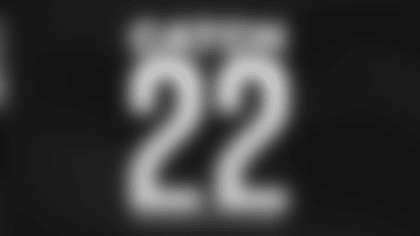The Patriots lost a game to the Raiders where they completed several initiatives at the top of their to-do list heading into Sunday's second leg of their desert back-to-back.
If we told you before the game that Bill Belichick's team would do the following, you'd say the Patriots won their second consecutive game to put themselves firmly in the AFC Wild Card picture:
- Take out All-Pro receiver Davante Adams (four catches on nine targets for 28 yards).
- Limit NFL-rushing leader Josh Jacobs to 92 yards on 22 carries.
- Hold Vegas's edge-rushing duo Maxx Crosby and Chandler Jones without a sack.
How does New England's defense hold a fully-healthy Raiders offense to -0.09 expected points added per play, control the line of scrimmage offensively, and lose? It's stunning, really.
Well, the answer to the question is situational football. The Patriots fudged up their lone red zone trip of the game, calling two timeouts in a two-play sequence, one of which accidentally wiped out a touchdown and then negated another score by false starting just before the snap. After that was a blocked punt, another stinker on third down (two-for-13), and one of the most perplexing final plays in NFL history was the cherry on top.
The Patriots didn't lose because an elite number-one receiver went off or an elite Pro Bowl pass-rusher wreaked havoc in the backfield. Instead, they dropped to 7-7 because the details weren't in order when it mattered most.
| Stat | Early Downs | Third Down |
|---|---|---|
| EPA/Play | +0.10 | -0.87 |
| Success Rate | 42% | 23% |
Offensively, although the Pats rushed for 226 yards and were mostly productive on early downs, it was their third-down offense (two-for-13) that led to so many stalled drives and missed chances. New England is now 29th in third down conversion rate at 34.1% and is dead-last in the red zone, where they've struggled all season to finish drives.
Unlike the game's final play, this situational trend offensively was a major contributor to Sunday's loss and is nothing new for the Patriots this season. Following a frustrating offensive performance in the loss to the Bills earlier this month, wide receiver Kendrick Bourne made candid comments in the locker room about the third down offense.
"We just need to scheme up better," Bourne told reporters. "They call this, and we call that, and it falls into what they want. We need to have it where they're falling into what we want. That's not my job. It's my job to just run the call."
New England's two-for-13 showing on third down harkened back to Bourne's forthright comments in Week 13. With former offensive coordinator Josh McDaniels and defensive assistant Patrick Graham using their institutional knowledge on the other side, a Raiders pass defense that ranks last in DVOA had the Pats third-down offense figured out.
Starting with this third-and-eight in the first quarter, the Patriots call their go-to third down play when the down and distance is manageable. New England runs their double dig concept to the sticks out of a three receiver formation to the quarterback's left. The Raiders anticipate the call by leveraging all three routes perfectly, and Mac has nowhere to go with the ball.
In the fourth quarter, the Patriots ran a similar play design on third-and-ten where the receivers' routes ran right into the Raiders one-cross scheme. Vegas drops a help defender into the middle of the field to cut off Meyers's crossing route, which allows the man coverage defender initially on Meyers to help to Tyquan Thornton's route, and Mac has to throw the ball away.
Vegas was all over the Patriots core third-down concepts, but the Pats had open receivers to move the chains in this example. However, Mac throws to the more covered crossing pattern, and the poor spacing combined with a slightly high throw leads to a Hunter Henry drop.
With the Patriots offense now at a 30-plus year low as the 25th-ranked unit by Football Outsiders' DVOA metric, unofficial play-caller Matt Patricia and the offensive coaching staff are easy targets. Quarterback Mac Jones completed a career-low 41.9% of his passes (13-of-31) for just 112 passing yards, which was his second-fewest yards in a game he started and finished beside the wind game in Buffalo last season.
Furthermore, Jones's expected completion percentage was 67%, while his actual completion rate was 46.7%, finishing the game with a completion percentage over expected (CPOE) of -20.4. His accuracy wasn't consistent in this game, his receivers dropped two passes, and there were a few shaky reads by the quarterback, too.
Ultimately, there were plays that the Patriots offense could've made where execution was the biggest issue. But waning confidence in their ability to scheme things up successfully on offense is understandable when defenses seem to know what's coming each week.
Here are three more takeaways and quick-hit film notes from the Patriots loss to the Raiders After Further Review:
1. Patriots Defense Slows Down Raiders Passing Attack With Simulated Pressures
Although it also succumbed to poor situational football on the Raiders game-tying touchdown drive, the Patriots defense was outstanding through 58 minutes on Sunday.
Yes, they play the full 60 minutes. And, yes, the ruling on Keelan Cole's game-tying touchdown catch was highly questionable as the refs decided there wasn't enough evidence to reverse the call on the field, which was that Cole was in bounds, resulting in a Raiders touchdown.
As schematically challenged as the Patriots offense is at times, New England's defense continues to spin the dial with the best of them. This week, the Pats unleashed their pressure package at a shorthanded Raiders offensive line and a pocket-passing quarterback.
The secondary, especially Jonathan and Marcus Jones, deserve credit for holding Adams in check and limiting Derek Carr to 231 passing yards on 38 attempts (-0.10 EPA per play). But New England got there by using highly-sophisticated schemes called simulated pressures or creepers.
In these pressure designs, the defensive front presents the pass protection with several threats to rush the passer. Then, at the snap, they drop off certain defenders and rush others based on where they anticipate the protection to go and maintain their numbers in coverage. Essentially, it causes the same conflicts for offensive lines as blitzes, but without bringing extra bodies.
New England's go-to simulated pressures are often referred to as replacement blitzes. In these schemes, the Pats will drop their edge defenders on the line of scrimmage into coverage and blitz their off-ball linebackers up the middle. As you can see, the tackles still need to step out toward the edge rushers at the snap like it's going to be a traditional rush. On the left side, it's a three-man slide toward Jahlani Tavai, and right tackle Jermaine Eluemunor looks to block Matthew Judon as he usually would. The protection opens a free path to the quarterback for Ja'Whaun Bentley, while the Pats play three-cloud toward Davante Adams with seven defenders in coverage. The only option for Carr at that point is to throw the ball away.
Now that you have a general idea of what simulated pressures are, we can show a few more examples of these schemes.
This time, the Patriots have five defenders on the line of scrimmage with Bentley up in the A-Gap. Judon and Uche fall off at the snap, with Bentley running an interior stunt alongside Deatrich Wise as the Pats drop eight into coverage in a Tampa-2 structure. Eluemunor again steps out toward Judon, leaving the Raiders right tackle in no-man's land. Even though the Pats only rush three, Bentley gets home to get the defense off the field on third down.
In those two examples, the Patriots play zone coverage in the secondary. But they also played downs in cover-one robber (man) schemes. Dugger drops out above to become a "robber" in the middle of the field, and with Bentley blitzing up the middle, it gives stud pass-rusher Josh Uche a one-on-one with the left tackle. Uche beats Kolton Miller around the corner, forcing Carr to step up in the pocket, where Bentley is waiting for him after steamrolling the running back.
As we mentioned, the beauty of these schemes is that they still create blocking conflicts for offensive lines without sacrificing the defense's numbers in coverage. Unlike a traditional blitz, where you send more rushers than blockers, creepers give the illusion that you're overloading the protection without actually doing so, protecting the secondary.
The Patriots were trailblazers in the NFL when it comes to running simulated pressures, and this year's defense is now executing them at a high level.
2. Patriots Offense Executes Game Plan to Limit Raiders EDGE Maxx Crosby
With all the issues the Patriots offensive line has had this season, it was good to see the unit create clean pockets against a legit pass-rush tandem.
According to Pro Football Focus, Pro Bowlers Maxx Crosby (three) and Chandler Jones (four) combined for just seven quarterback pressures, and neither recorded a sack. Seven might sound like a lot, but Jones had 11 in one game two weeks ago, and Crosby has two eight-pressure games this season, so seven is a good day for the offensive line.
Although left tackle Trent Brown and Jones went one-on-one throughout the afternoon, the Patriots did what they could to help backup right tackle Connor McDermott against Crosby.
On third down, that often meant chipping with their tight ends, mainly Jonnu Smith, before the Pats receivers released into the route pattern. Above, the Pats use Smith to chip Crosby on his way out, and it buys enough time for Jones to find Tyquan Thornton for a completion.
Some credit also goes to quarterback Mac Jones, who released the football in 2.57 seconds on average despite an average target depth of ten yards (pretty high). Here, Jones shows good pocket awareness to feel Crosby beating McDermott in a one-on-one matchup and gets the ball to his check down for a nice early-down completion, avoiding a likely sack.
In the running game, the Patriots called trap plays toward Crosby's side to use his aggressiveness against him. This time, McDermott gets on a double-team block, and Jonnu Smith lets Crosby through on purpose so that a pulling Cole Strange can "earhole" the Raiders star edge rusher, which creates a crease for rookie running back Kevin Harris.
Lastly, McDermott deserves credit for winning a handful of his one-on-ones against Crosby. One of those wins came on Jakobi Meyers's 39-yard reception that set up the go-ahead touchdown in the fourth quarter, where McDermott got the better of Crosby.
The Patriots starting right tackle over the last three games was signed off the Jets practice squad in late November and was impressive this week. McDermott stayed afloat against Crosby (two pressures), was effective on double-teams with right guard Mike Onwenu, and contributed to the 226 rushing yards in a positive way (82.9 run-blocking grade).
3. Rhamondre Stevenson Leads Big Day for Patriots Rushing Attack
Speaking of the Patriots rushing attack, this was their best performance on the ground from a blocking perspective all season, and Stevenson was fantastic once again.
Although the second-year running back is taking his share of the blame for the final play, Stevenson had another monster stat-line on Sunday: 19 attempts, 172 rushing yards (9.1), 126 rushing yards after contact (6.6), six missed tackles forced, five runs of ten-plus yards.
Before you write it off because it was the Raiders defense, if there's a strength in Vegas's defense, it was against the run, where they're 22nd in DVOA compared to 32nd versus the pass.
New England gashed the Raiders using a mix of their old-school gap and duo run-blocking schemes, attacking the interior of Las Vegas's defensive line in a downhill game plan.
On Stevenson's go-ahead touchdown run, the Patriots ran the trap play toward Crosby that we showed in the last section. This time, Onwenu and McDermott get things started with their double-team taking the 2i-technique for a ride, which opens the path for Stevenson to follow Cole Strange's kick-out block as the left guard pulls. Strange and tight end Hunter Henry get enough of Crosby and the play-side linebacker, while Nelson Agholor makes a great block on the deep safety to spring Stevenson the rest of the way. Clinical blocking and a smooth cut off Agholor's block by Rhamondre to take it to the house.
Although the touchdown was the big play, arguably the more impressive run came when they were backed up on their own two-yard line following a downed punt inside the five.
Getting the ball off your own goal line is always dangerous, and the Pats didn't just get it out of their end zone; Stevenson ran for a 26-yard gain. The Pats ran duo schemes out of 12-personnel very effectively. The key blocks in the duo scheme are on the backside by McDermott (RT) and Onwenu (RG). With the linebacker working to the combination block between the center and left guard, the right side of the line starts moving bodies, especially Onwenu, and Stevenson shows off his excellent vision and ability to work laterally across the line of scrimmage to find the open gap.
The Patriots set a new season-high with their 226 rushing yards against the Raiders on Sunday in their best rushing performance of the year.
4. Other Quick-Hit Film Notes From Patriots-Raiders After Further Review
- This performance wasn't indicative of Mac Jones's typical downfield accuracy and ball placement. But he was missing throws because he's not coming through the ball and is opening his front shoulder early when he can't throw from a solid base. NFL pockets are muddy, and pressure is going to be there. He'll need to improve in this area.
- The Patriots offensive line was good. But they still struggle to block second-level defenders in outside zone. Numerous zone runs were blown up at the line of scrimmage because the combination blocks weren't working up to the second level. When you look at how they're trying to block it, they could use a fullback to go back-on-backer in the hole.
- Although Mac missed him up the seam on one play-action drop-back, Tyquan Thornton's struggles against physical man coverage continued. The quick route releases we saw flashes of in camp aren't there against starting-caliber corners. He gets smothered at the line.
- The double-move shot play the Pats called in the high red zone where Meyers drew a DPI was nice. They need to do more of that, as it helps them skip most of the red zone if they score or get the flag to set them up inside the five.
- I'm not seeing consistent separation against man coverage from this receiver group. It takes too long for them to uncover at times, receivers run into leverage too often, and the one-on-one matchups aren't open enough. They missed Parker's size in this one.
- Christian Barmore was noticeable in his return: sack, QB hit (negated by penalty), and two-gapped nicely against the run. He's going to feast on those interior one-on-ones.
- It's like they are using Matthew Judon as a decoy. He dropped into coverage nine times, mostly on third down, and is often looking to draw attention or anticipating the extra help coming his way. As long as they keep getting home with Uche and their other rushers, it's not a big deal. I don't see a drop-off at all. Just how he's being used.
- Uche was good again, with a team-high five quarterback pressures. He had a sack of his own and forced Carr to step up into another sack. The killer is that he wasn't on the field for the Raiders game-tying touchdown in an obvious passing situation. I couldn't tell you why, but it was Anfernee Jennings for that play.
- This was a great game by Kyle Dugger, who has been quiet as of late, so he needed an impact performance. His pick-six was an excellent example of applying film study to game day, they used him in high-stress zone coverage situations instead of the linebackers, which worked well (Tampa-2 seam runner, cover-three cross defender), and he was flying downhill into the box in run support. This was him at his best.
- Strong game from Ja'Whaun Bentley. He was a big part of their game plan: take on lead blockers against gap runs, blitzed on the simulated pressures, and had a few solid coverage reps. Bentley finished with a team-high six run stops, including a key open-field tackle in the fourth quarter on third down, and ran over Raiders running back Ameer Abdullah on his sack.
- A throwback performance by Lawrence Guy, penetrating the line of scrimmage against zone runs, taking on doubles/combos from his 3-4 DE spot, and registering a sack.
- Jon and Marcus Jones mostly played sides in this one, meaning they didn't travel with specific receivers and did well staying over the top of verticals. They had one-on-one matchups with Adams out of cover three and quarters that they won. It wasn't all doubles.








































